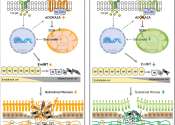'Smart' contact lenses could someday enable wireless glaucoma detection
Most people with early-stage glaucoma don't know they have it, even though early treatment is key to reducing vision loss. While detecting a subtle increase in eye pressure helps doctors to diagnose glaucoma, it's challenging ...
May 9, 2024
0
16









